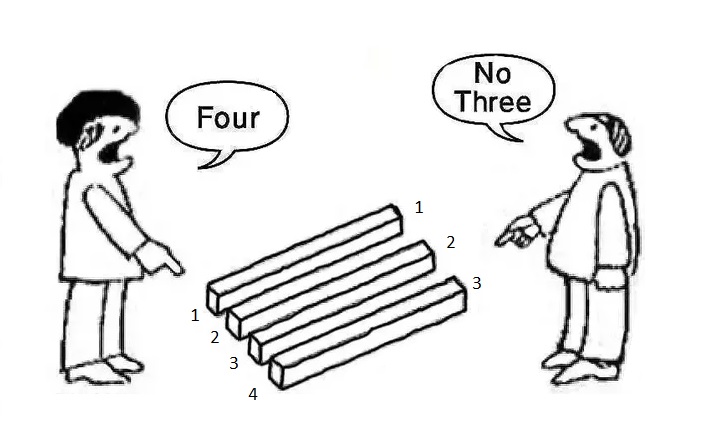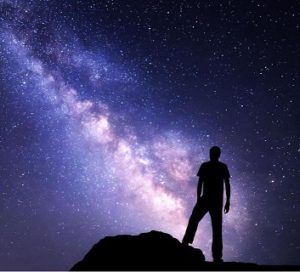Actuality

Actuality is not upside down, means the state of the Contemplation of the Ten Dharma Realms. Ordinary people are upside down in these ways:
1. They consider what is NOT permanent to be permanent;
2. They consider what is NOT bliss to be bliss;
3. They consider what is NOT self to be self;
4. They consider what is NOT pure to be pure.
Those of the Two Vehicles have their own four ways of being upside down.
1. They consider what is permanent to be impermanent.
2. They consider what is bliss to be suffering.
3. They consider what is self not to be self.
4. They consider what is pure not to be pure.
Even Bodhisattvas have the upside-dowdiness of getting out of the false. Only Buddhas are not upside down. Thus living beings in the Nine Dharma Realms reside in upside-down environments, and are upside-down. Being upside-down, sometimes they feel good, and sometimes they feel bad. If you understand, then there is nothing that is good or bad in itself. Concepts of good and bad are based on the false speculations. If you are in accord with the Middle Way then you can be not upside-down.
To be more specific, if you want to study the Buddha Dharma, then you are not upside-down. If you do not want to study the Buddha Dharma, you are going down the road of being upside-down. If you follow the rules, you are not upside-down. If you do not follow the rules, you are upside-down. You should each take a look at yourself to see if you are upside-down. If you are, you should quickly change your behavior.
Today article, we will discuss in further details of “Reality”
“Actuality” means not falling into emptiness and not falling into existence. The Three Truths of Emptiness, Falseness, and the Middle are not different from each other—they are the same.
Emptiness is falseness; falseness is the Middle. When one is empty, all are empty. When one is false, all are false. When one is the Middle, all are the Middle. The Three Truths are not differentiated, and that non-differentiation is “actuality.”
“Actuality” also means not being the same as the Seven Expedients. The Seven Expedients are the practices of the Two Vehicles practitioners.
1. The Five Stoppings of the Mind;
2. dwelling in particular characteristics;
3. dwelling in general characteristics;
4. heat;
5. summit;
6. patience;
7. foremost in the World.
This transcends the Seven Expedients, and so is called “actuality.” They are characterized by actuality—they have actuality as their basic substance.
Those practices these seven expedients can achieve the first 4 stages of Arahat: Sotapanna, Sakadagami, Anãgãmi and Arahat. When one has attained the level of Arahat, he can escape the cycle of birth and death. Even he is no longer subject to rebirth or go thru the six cycles of life, but the illusion of thoughts has not completely eliminated. Only at the level of the Buddha, one can truly eliminate all illusion. The true in Actuality is the true mind.
There are two types of Arising & Cessation: The ending of the life and death cycle, and the ending of the illusion of thoughts. The seven expedients are the practices of the Arahat to end the cycle of life, but they still have the arising & cessation of deep thought. Arahat ends the cycle of life. Bodhisattva ends the arising & cessation of deep thought.
“Actuality” refers here is beyond the Seven Expedients, is no longer upside down, means the arising & cessation of illusion though has ceased. In the Wonderful Dharma Lotus Flower Sutra there is a section mention this particular samadhi, “Actuality”
Great Master Zhi Zhe spend his entire life bowing to the Dharma Lotus Sutra. When Great Master Zhi Zhe was around in mid teen, he heard a monk chanting the chapter, the universal door of Gwanshiyin Bodhisattva. When he heard it, he instantly remembered it, just like he had heard it in his previous life. Not until he met the another Great Master, teaching him to recite the entire Dharma Lotus Sutra, bow and pay respect. When he recited to the chapter, the former deeds of Medicine King Bodhisattva, he entered samadhi and awoke. The Great Master recognized his enlightenment of the Dharma Lotus Samadhi -the dharani of single revolution.
In the Dharma Lotus Sutra, it mentions that all things are false. From “Actuality” to “Unobstructed”, all eighteen kinds of emptiness are the general meaning of the false reality. All reality depends on some type of creation, from upside down thoughts. That is why we should look closely at the things around, view them as emptiness.
The Eighteen Kinds of Emptiness are: “Actuality”, “Not upside-down”, “Not moving”, “Not retreating”, “Not turning”, “Being like empty space”, “Without a nature”, “Having the path of language cut off”, “Not coming into being”, “Not coming forth”, “Not arising”, “Without a name”, “Without an appearance”, “In reality non-existent”, “Measureless”, “Boundless”, “Unimpeded” and “Unobstructed”.
1. “Actuality” is the first emptiness, discuss in the above paragraphs
2. “Not upside-down” : permanent to be impermanent, bliss to be suffering, self to be not self, pure to be impure. Those are the upside down thought of those in the small vehicle (two vehicles). Even Bodhisattvas have the upside-downness of getting out of the false. Only Buddhas are not upside down. Thus living beings in the Nine Dharma Realms reside in upside-down environments, and are upside-down. Being upside-down, sometimes they feel good, and sometimes they feel bad. If you understand, then there is nothing that is good or bad in itself. Concepts of good and bad are based on the false speculations that living beings make in their upside-down state. You should each take a look at yourself to see if you are upside-down. If you are, you should quickly learn how to be not upside-down. If you are not upside-down, you should try to be even less upside-down. Upside-down is considered internal emptiness. Internal (inside your mind) means things outside doesn’t affect the internal organs: eyes, ears, nose, tongue, body and brain. All are false speculations, even your own ego.
3. “As not moving” refers to samadhi. To have samadhi is to not be afraid of anything. You may be sitting in mediation within samadhi and when a tiger approaches, you must not be afraid. Leave life and death aside and look upon life and death as the same.
Someone may say, “It is just because I am not afraid of death that I do not need to study the Buddha Dharma. People study the Buddha Dharma in order to end birth and death, but since I am not afraid of birth and death, I do not need to study the Buddha Dharma.”
If you do not study the Buddha Dharma because you do not fear birth and death, birth and death will never end. You cannot stop birth and death that way. On the other hand, if you do not fear birth and death and are unmoved by birth and death, you have samadhi power. Also without being selfish or self centered means not moving. Not moving is external emptiness. External (outside) objects, or don’t let the external six objects dictate your behavior.
4. “Not Retreating”: Your wisdom continue to grow, without retreating into stupidity. Your body and mind are still and quiescent, no false thinking. Resulting the ability to attain great wisdom and knowledge. Also means you have the equality mind set, doesn’t retreat to one side. Not retreating means internal and external emptiness.
5. “Not Turning” This means not having to turn on the wheel of rebirth. It means not being like ordinary people who revolve in the paths of birth and death. It also means not being like those of the Two Vehicles who turn from being ordinary people into sages. Not turning is emptiness, breaking all things, not longer being selfish, seft center ( the I ). Doesn’t have any restriction, including emptiness dharma, empty out all dharma, empty out all physical obstacles, mind are set and not turning.
6. “Being like empty space”. The Flower Adornment Sutra says, “If one wishes to understand the Buddhas’ state, one must purify one’s mind so it is like empty space.” What we call empty space is not anything at all. Although it is not anything at all, nonetheless, everything is contained within empty space. “Empty space” is only a name. Although it has a name, it does not have a nature of its own. The Wisdom of Contemplation of the Middle Way is also just a name. When you cultivate the wisdom of the Middle Way, that is only a name. If you look for something real, there is nothing at all. Thus, It is like empty space. You should not “add a head on top of your head” and ask, “What is empty space?” and go around looking for empty space. Empty space is empty, not anything at all
7. “Without a nature” means as not having nature of their own, not having something else’s nature, and not having a shared nature, a nature held in common. It also means not having a causal nature or a resulting nature. They are, therefore, without a nature. Everything is empty, and so this, too, is talking about emptiness.
8. “Having the path of language cut off” – They cannot be articulated, or even conceptualized. The path of language is cut off, so there is no way to speak about them.
“The mouth wants to speak, but the words are lost.
The mind wants to think, but reflections have perished.”
The mouth would like to talk but there is nothing that can be expressed in words. The “four predications” could also refer to stanzas of four lines, such as:
“All conditioned dharma,
Are like dreams, illusions, bubbles, shadows;
Like dew and like a lightning flash:
Contemplate them thus.”
9. “Not coming into being” What does not come into being? Ignorance does not come into being. Wisdom does not come into being. There is no wisdom and no ignorance. Because you have no ignorance, you also have no wisdom. Because you have no wisdom, you also have no ignorance. Wisdom and ignorance are opposites. When you produce neither ignorance nor wisdom, you are in the state described as “not thinking of good and not thinking of evil.”
That is because there being no ignorance and no wisdom is a principle, the fundamental substance of principle—the Great Treasure of Light of one’s inherent nature. Thus, there is nothing that is destroyed and nothing that destroys. There is no way to destroy it, because it is merely a principle—the principle of not coming into being. In this state, neither practice, nor position, nor cause, nor effect come into being. Not coming into being is the absent of creation. In order to create being, two things comes in contact. But if no coming, there is no being.
10. Not coming forth means not coming out and not going in— neither exiting or entering. That is the original substance of the Tathagata, the original substance cultivated by the Tathagata until the ultimate point is reached, so that there is no coming forth or entering. This also means there is no ignorance and no wisdom which can be spoken of.”Not coming forth” is emptiness. “Emptiness doesn’t have a creation, like the illusion flower in the empty space”. Emptiness is to empty out, empty all things. If there is nothing in, there is nothing coming out.
11 . Not arising means there is no root. In the Diamond Sutra, it mentions this no root philosophy. Because there is no root to start, there is no arising. When one has certified to the principle of the Tathagatas, the expedient teachings—the provisional dharma—all become still and quiescent. They do not arise.
12. As without a name. Isn’t there a name for them? There is no name. There is only the principle. By this we mean that there is no name or term that can represent the principle. From “As not upside-down” in the text above through “As not arising,” there is no name that can be their name.
13. As without an appearance. There is also no appearance that can be said to characterize them. In the same way, from “As not upside-down” through “As not arising,” there is no mark or appearance whatsoever that can describe them. They have no mark. “As without a name” refers to the emptiness of a nature. “As without an appearance” refers to the emptiness of marks.
14. As in reality non-existent. This if further praise of the contemplation of the Middle Way, which does not fall into the two extremes of emptiness or existence. For that reason, it says “As in reality non-existent.” There is nothing at all, it refers to Unobtainable Emptiness
15. As measureless. The dharmas are innumerable, and cannot be counted. An example of numbered dharmas is the five skandhas—form, feeling, thinking, formations, and consciousness. They have a set number: there are five kinds. The six sense organs are of six kinds, and there are six of the sense objects. Together they are the twelve entrances, which have twelve terms in all. Between the six sense organs and the six sense objects, add the six consciousnesses, and that makes the eighteen realms. The five skandhas, the six sense organs, the twelve entrances (also known as the twelve locations, and the eighteen realms are all numbered. Now in the contemplation of the Middle Way, there are no numbers. Thus there are no measures. Measurelessness is the entire measure—a measure is where there is nothing in excess and nothing lacking, and so they are said to be measureless.
16. As boundless. Being boundless means there are no boundaries or borders. In the Small Vehicle there are confines and boundaries. All their dharmas are fixed and bounded. What is not fixed does not have bounds. Here, therefore, being “boundless” means there are no fixed dharma. And now the Emptiness of No Dharma. When there are no dharma, there are no boundaries.
17. As unimpeded. Being unimpeded means universally entering into all dharma without impediment by means of the wisdom of Contemplation of the Middle Way. it refers to the Emptiness of Both Dharma and No Dharma. Both are empty and unattainable. Since there is no impediment, dharmas are empty and so are no dharma.
18. And as unobstructed. There is not a single dharma which can obstruct and cover the Wisdom of Contemplation of the Middle Way. The Emptiness of Scattering. All hindrances and obstructions are gone, so it is “unobstructed.”
“All things are created from union, from upside down thoughts. The truth meaning is so deep that can’t explain in just a few words. The above can’t only describes the general meaning of the eighteen emptiness. The Eighteen Kinds of Emptiness can be referred to the emptiness in the Great Prajna Sutra, or can used all the dharma to explain it in details. All the dharma of Actuality, Not upside-down, … , Unobstructed.
Don’t be upside down, adding the judgement of what is empty and not empty, which is real, which is fake, this is creation, this is nor creation. Just find a peaceful place to cultivate your mind, stay still and not moving like a mountain. Quietly reflecting all the dharma, the emptiness of the empty space. All doesn’t have the beginning, not stable. Not without a name, not coming forth. Not moving, not retreating. Still as one mind, contemplates all dharma as empty, that is the Bodhisattva place of cultivating.
If you often recite the Dharma Lotus Sutra, remember these eighteen kind of emptiness, in the chapter Happily Dwelling Conduct. You will soon attain the Dharma Lotus Samadhi.


